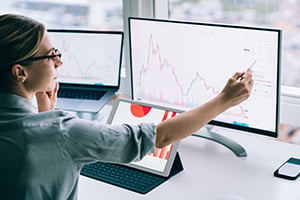 This will be the last post on the 100K project because I finished it a couple of days ago, 364 days after I started. For those coming in fresh, the 100K project was a decision I made, 364 days ago, to start tracking my daily calorie balance—consumed less burned—over time. The goal was to get a net loss of 100,000 calories down, over an indefinite time period. You could think of it as taking 100,000 calories out of the fat bank.
This will be the last post on the 100K project because I finished it a couple of days ago, 364 days after I started. For those coming in fresh, the 100K project was a decision I made, 364 days ago, to start tracking my daily calorie balance—consumed less burned—over time. The goal was to get a net loss of 100,000 calories down, over an indefinite time period. You could think of it as taking 100,000 calories out of the fat bank.
The hope and expectation were that the process would result in weight loss, but that wasn’t the metric. Weight loss is, to a large extent, beyond my control in the short term. And trying to lose weight is frustrating, especially when you have weeks (or months) of stable weight despite doing the right things.
What I wanted to do was replace something I couldn’t control (i.e., weight) with something I could control (i.e., eating and exercise). I also wanted to replace a short-term goal of weight loss with a long-term goal of changing my behavior. And I wanted to do it in such a way that it allowed for periodic underperformance without guilt. The 100K project was designed to do all that.
Riding Out the Setbacks
And it worked. Just less than a year in (although, as noted, there was no time specification) when I hit the 100K target, I was down about 35 pounds—and at very close to my lowest weight in the past 10 years. That 364 days included weeks and months where my weight stayed stable and even went up, even as I continued to log my eating and exercise. It included several periods, notably at Commonwealth conferences, where I was making deposits into the fat bank, rather than withdrawals. Right now, in fact, I am in the middle of a month-plus period where my weight is up a bit. I am not happy about that.
But the point is that, in terms of my behavior and the ultimate results, it doesn’t matter. I am still down close to 35 pounds. I am still logging my eating and exercise. Temporary setbacks and fluctuations don’t mean that much as I continue to make progress overall.
Even though I have hit my initial goal, looking at my waist I am not done yet. I plan to continue to another 50,000 calories or so, making it the 150K project. But despite that, I am incredibly pleased with the results so far. The control, the behavior modification, and, yes, the ability to ride out setbacks have amply proven that my hopes for the program design have proven out.
Process Vs. Results
You can probably guess how I am going to tie this back to the current conditions of the markets. I explicitly drew the 100K program design from how we should invest. The focus is on what we can control, making deposits in our investment accounts. The focus is on the long term despite setbacks and even reversals. And the focus is on the process, rather than the results. All of these have proven to translate directly from investing to weight loss.
I have absolutely no desire to be a weight-loss professional. But as I wrote yesterday, as an investment professional, this is how I have to think. It works for investing. And, as I have found, it works in other areas as well.
Back to the Markets
This brings us to today’s markets. As an investor, with my personal money, I am as vulnerable as anyone else to both fear and greed. Fear is at the head of the list today, but at some point, it will be greed again. But when the fear hits, all I need to do is remember to stick with the process. Despite what the account statement (or the scale) says, if I stick with the process, I should get where I want to go. If I doubt that, I can look down: the proof is my waistline. Over time, despite the current setbacks, the proof should show up in my investment account as well.
The right process works if you don’t let emotions derail it. Stick with it; we will get there.


 Print
Print

